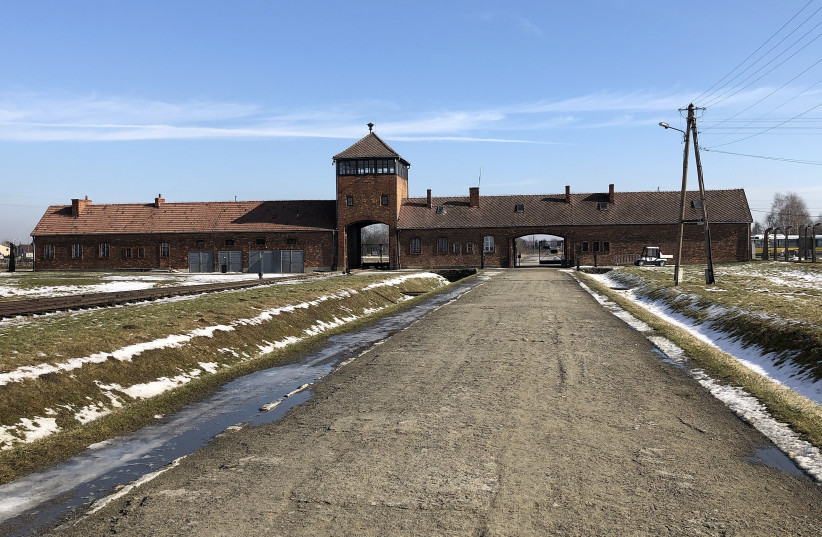Jews remember. We are commanded by God on seemingly countless occasions (169, in fact) in our Bible to remember, recall, not forget and commemorate. But, sometimes we find it hard to remember:
Why now Shoah?When I have so many other things on my mindWhen I have so much to worry aboutWhen I have to take care of the here and nowWhy now Shoah?– Why Now Shoah by Eitam Lehman
Mr. Lehman is echoing the famous poet Yehuda Amichai, who in his poem “Let the Memorial Hill Remember” also tried to run away from memory. The hard fact is that instilling memory in students is hard, especially when we are talking about unpleasant memories. It is much easier to create constructs of commemoration instead of remembering. Also, it is much easier to have students learn reams of information about the Holocaust, but that doesn’t ensure that the Holocaust will be instilled in the student’s memory long term.
But, there is no substitute for personal memory. Only people can remember, not the street or the Torah Scroll or a printed prayer, these are only cues to motivate us to create memory. You can try to instill memory by teaching a lot of facts and hoping that some of those facts will remain with the student.
But, that is an ineffective and inefficient way of engendering memory and I think there is a better way. This better way was stated by Berl Katznelson in his entreaty to youth leaders who wanted to reject Jewish traditions:
“...A renewing and creative generation does not throw the cultural birthright into the dustbin. It examines and scrutinizes, accepts and rejects. At times it may keep and add to an existing tradition. At times it goes to the junk pile to excavate and remove the rust from that which had lain in forgetfulness...” (Berl Katznelson 1935).
For Holocaust memory to continue, it must be renewed and renewal must be driven by three principles:
- The student must take an active role in creating this memory.
- The memory must be relevant and speak to the student’s inner world.
- The memory must have emotional significance for the student.
The Lookstein Center together with me has developed an educational tool to aid in Holocaust education based on these principles called Creating Memory. It is an arts-based program intended to help people encounter the Holocaust in an active, personal and meaningful way. Participants are exposed to poetry and text that express universally relatable themes from the Holocaust, such as family and belonging, memory and silence, place and displacement, and faith and hope. These themes are also relevant to current generations, and allow them to understand and access the emotional impact of the Holocaust, not only its historical manifestations.
The second stage of the process is to guide students to channel these emotions into a creative outlet that allows them to feel a part of the Holocaust narrative. It is now a narrative they are taking part of via their creativity. The active participation of the coming generations in voicing their own form of Holocaust remembrance is vital in ensuring that Holocaust remembrance stays vibrant and relevant with the passage of time.
This year, I collaborated with the Shahaf Foundation and its Neighborhoods in Change project, where the artist forum of the Kiryat Hayovel neighborhood in Jerusalem decided to create a unique program on Yom Hashoah. They invite the citizens to meet next to Yad Vashem and have a silent performance walk to the neighborhood, where they will have a collaborative art work – art created by the audience, followed by a workshop and exhibition.
Another connection made by the Shahaf Foundation was to the Tarbut culture community movement, where they decided to create a program that includes exhibitions and cultural events along with an artistic programming for youth around the country.
The artists had a preparatory workshop with me and created this moving day based on their inspiration and input. I find it a great success in creating memory and I am sure that all participants will benefit from it and get more connected to their roots and heritage.
The goal of Creating Memory is to give the educator a tool to actively involve the students in Holocaust history by making it more relevant to their inner world and by allowing them to create their own meaningful narrative, thus transforming history into memory and memory into meaning.
The writer is the managing director of Steinmetz Herskovitz Family Fund. He is a poet and Second generation who developed Creating Memory as a means to connect future generations to the Holocaust.
Creating Memory is a program that encourages approaching the Holocaust in a less factual and more conceptual manner via writing and the arts.

